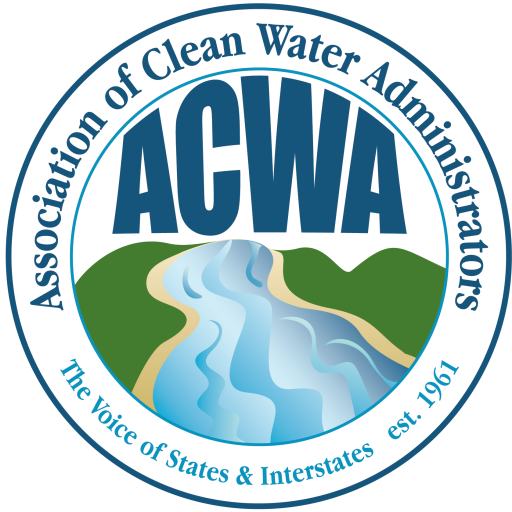Important Surveys for ACWA State Representatives
Official State Members of ACWA: We have two important surveys for ACWA State and Interstate representatives . The first is a survey on ACWA priorities for the next 12 -18 months. The second is a survey on how potential reduction/elimination of federal grants to states (and other programs) will tangibly affect state staffing and program effectiveness. Both surveys are HIGH PRIORITY, and if you have not filled it out please do so soon.
For questions, including requests for the survey URLs, please contact Julian Gonzalez.
HABs in Tribal Communities Webinar
On Tue, April 11 from 3 – 4:40pm ET, EPA will host a webinar on harmful algal blooms (HABs) and its adverse effects on tribal communities. Speakers will discuss their involvement in ongoing HABs activities, research, and collaborations. Speakers will also present HABS research supported under the Science to Achieve Results (STAR) Grants program.
AWWA Releases Article on Comparison of HABs Analyses
In March 2017, The American Water Works Association (AWWA) released a comparative methods study in their Journal on the of microcystins in drinking water using Enzyme-linked immunosorbent assay (ELISA) and liquid chromatography/tandem mass spectrometry (LC/MS/MS). ELISA results of microcystin-LR spiked into raw water samples were close to the spike concentrations, but method variability was ±25%. However, ELISA-derived microcystinLA concentrations were 2-3x higher than the spike concentrations obtained using the kit-provided microcystin-LR standards, indicating the need for variant-appropriate ELISA standards. LC/MS/MS results agreed with spike concentrations for all variants in reagent water, but matrix suppression was observed in some raw waters. In bench-scale studies, ozonated microcystins generated low-level positive responses by ELISA and a protein phosphatase inhibition assay, even though microcystins were not detected by LC/MS/MS.
These findings indicate that ELISA results, particularly in treated water, should be cautiously interpreted because of the possibility of false-positives, relatively high variability, and differential detection of some variants.
ICIS Webinar for Pretreatment
On Wed, April 12 from 1:30 – 3:30 pm ET, EPA will host a webinar on data entry in ICIS for the pretreatment program. The webinar will demonstrate the ICIS tool and how pretreatment data is to be captured. Please pass this invitation to any permit and/or data entry staff in your state who would benefit from the training.
ACWA Meets with EPA OIG
Early this week, ACWA Executive Director Julia Anastasio and staff Julian Gonzalez (along with representatives from a select few other state associations) attended an introductory meeting with new EPA Office of Intergovernmental Affairs (OIG) officials.
Administrator Pruitt indicated at ACWA’s mid-year meeting that OIG would be a key part of ongoing state outreach efforts for the agency during this administration. The meeting gave us a chance convey our eagerness to work with them on a new WOTUS rule and other issues, as well as show concern about the proposed EPA budget and its effect on states. OIG expressed gratitude for a chance to meet us in person and emphasized how they look forward to working with states.
USGS Releases Interactive Water Quality Map
This week, USGS revealed its new interactive map that can be used to track the trends of 51 water-quality constituents and 38 aquatic-life metric at nearly 1,400 sites. This map gives a long-term look at changes in the quality of the nation’s streams.
CWA Section 106 and 319 Funding Cuts
The President’s FY2018 budget is calling for a $69.55M cut to §106 funding. CWA §106 of authorizes funding to the states, interstates, territories, and tribes, to help them prevent, reduce, and eliminate pollution from the nation’s waters. These funds are used to help develop state water quality standards, set pollution reduction loads, issue state permits, confirm compliance, monitor results, and report on program successes. Reducing these funds could seriously impact on programs like surface water management, water quality improvement, and pollution prevention – all of which could also significantly increase drinking water utilities’ costs associated with source water treatment.
The budget also zeroes out the federal §319 funding (currently $164M). States use these funds for critical restoration efforts in waterbodies primarily impaired by nonpoint sources. Since most waterbodies on the impaired waters list are impaired due to nonpoint source pollution, §319 funding remains critical to maintaining beneficial surface water uses and safe water supply sources for drinking water utilities. Eliminating EPA funding to states intended to solve the difficult issues of nonpoint source pollution would almost certainly set back state nutrient reduction efforts and damage local economies.
According to Environmental Council of States (ECOS) the states implemented ~96.5% of federal environmental laws through delegated/authorized programs. State agencies conduct 90% of all data collection and enforcement actions; they also issue most permits needed to build or operate a facility. Yet budget data collected by the Congressional Research Service from 2004 to 2015 show that EPA grants to the states have been flat or, in real dollar terms, declining since 2004. Should FY2018 federal funding to states be reduced dramatically, states will have commensurately fewer resources, limiting their abilities to implement core clean water protection programs as required by the CWA. ACWA will continue educating different stakeholders on the implications of these potential changes for both on-the-ground pollution reduction and for EPA-State cooperative federalism.
For more information, see our recently updated EPA budget chart and our one-page write up of budget-related talking points.

